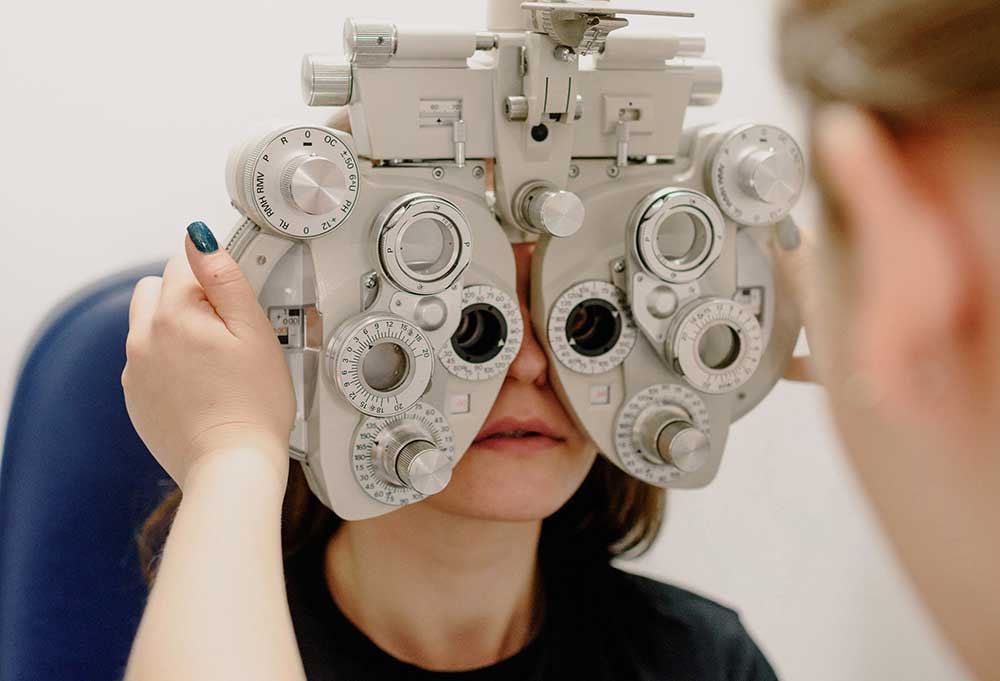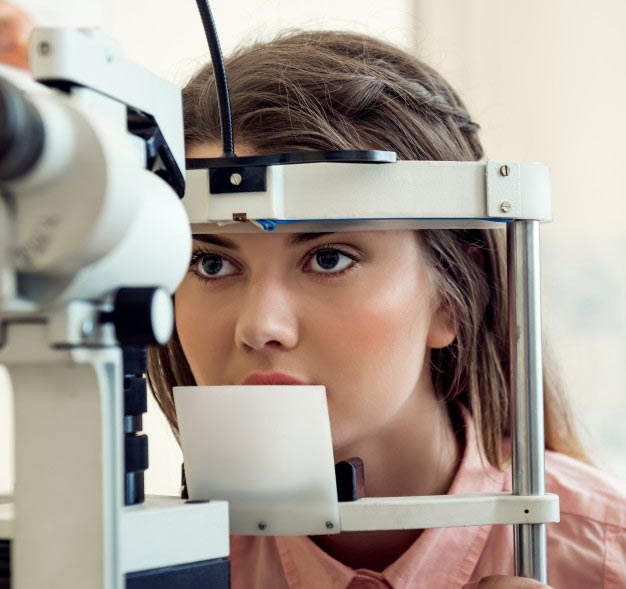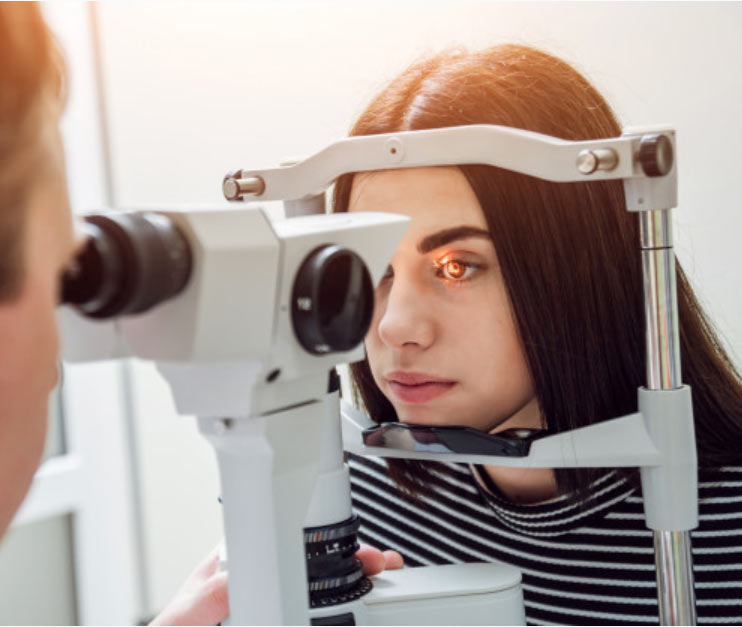
What to Expect at Your Eye Exam
When you schedule an eye exam at InVision, you can feel confident knowing your vision is in the hands of one of the best optometrists in town! Here’s what to expect:
When you arrive at InVision, the eye doctor will invite you into the exam room after it’s been cleaned and sanitized. The doctor will ask some preliminary questions about your vision and if you have any concerns about your eye health.
A complete eye exam consists of two parts: determining your vision correction needs and evaluating your eye health.

A phoropter is used to determine your vision prescription.
1. Vision Correction
The vision test is just like in the movies – the doctor will show you a letter chart and ask you to read the smallest line of text.
The optometrist uses a phoropter to test different lens corrections to help dial in the perfect prescription for your vision needs, whether distance or close up, and correct for astigmatism.
If you can see objects up close clearly, but objects in the distance are blurry, you’re considered nearsighted. If it’s easier for you to see things in the distance, but you struggle to see things that are near, you’re farsighted.

A tonometer measures the pressure inside your eye.
2. Eye Health
During the eye exam, the doctor will use two or three tests to determine the health of your eyes.
First, the doc will use a tonometer to measure the pressure in your eyeball; high pressure is indicative of glaucoma and other vision disorders.
Some tonometers use a puff of air to measure eye pressure, while a Goldman tonometer uses a small probe to gently touch the cornea to get a measurement.
For the second part of the eye test, the optometrist uses a slit lamp with a bright light to see the back of your eye. Since the slit lamp requires the doctor’s face to be just a few inches from yours, we’ve installed clear plexiglass shields as an added safety measure.

The doctor will examine the back of your eyeball for signs of injury or eye disease.
3. Back of the Eye
The third part of the eye exam requires dilating your pupils – the black part of your eye – so the doc can see even more of the back of your eyeball and retina.
The doctor will put two eye drops into your eyes; the first numbs the eye slightly, while the second drop causes your pupils to dilate, or fully open. Dilating the pupils keeps them from shrinking when the doctor uses a bright light and lens to look inside your eyes for signs of injury, retinal detachment, macular degeneration and other eye conditions.
After dilation, you may find it difficult to see things up close – like your phone – and your eyes will be more sensitive to light, so be sure to have your sunglasses handy after your eye exam!
While our eye doctors accept all major medical insurance for an eye exam, InVision does not directly bill any insurance for eyewear. We recommend checking with your insurer to confirm coverage as many insurance companies will reimburse for eyewear purchases with the itemized receipt you receive at purchase.
Ready to schedule a safe, comprehensive eye exam? Click over to our Scheduling page and make an appointment at any of our four locations.


